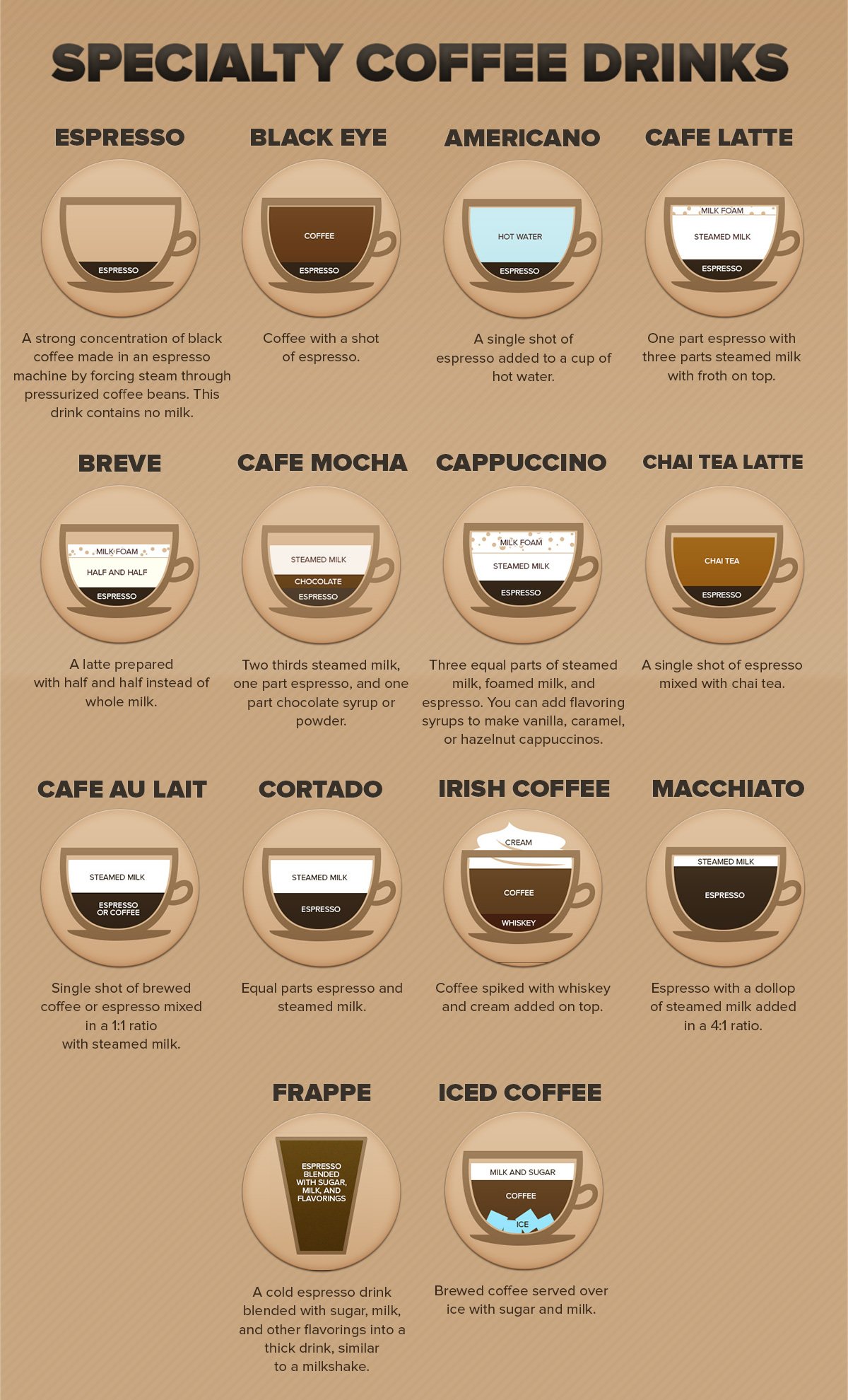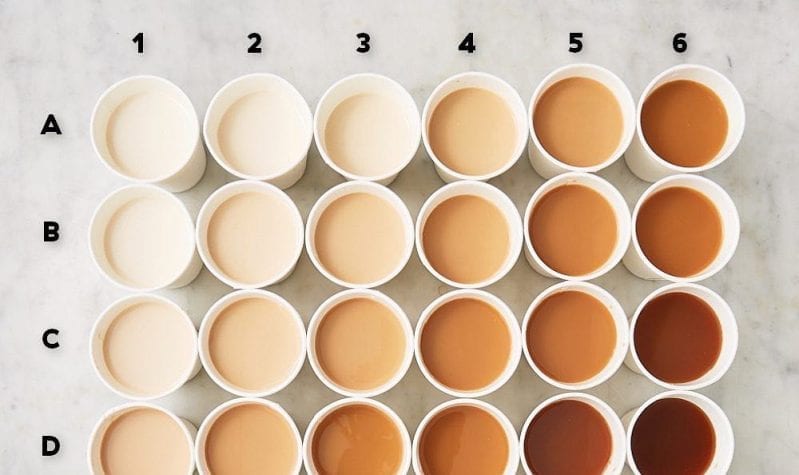If you are like most of us, coffee is your elixir of life. The smell of brewing coffee in the morning is enough to invigorate you and help you start the day like a pro. Whether you like your coffee black, with cream or sugar, or you enjoy experimenting with new flavors, brewing your cup of coffee can be a great way to start your day just right. However, there are different methods of brewing coffee, and each method requires a unique coffee to water ratio.
Pour Over Coffee Ratio Chart
 The pour-over coffee method is simple to use and produces great-tasting coffee. It’s an ideal brewing method for those who like their coffee in small amounts. For every six ounces of water, you should use 1 to 1.5 tablespoons of coffee. This ratio is perfect if you prefer your coffee medium-bodied or not too strong.
The pour-over coffee method is simple to use and produces great-tasting coffee. It’s an ideal brewing method for those who like their coffee in small amounts. For every six ounces of water, you should use 1 to 1.5 tablespoons of coffee. This ratio is perfect if you prefer your coffee medium-bodied or not too strong.
Coffee to Water Ratio Calculator & Charts
 There are different methods of brewing coffee. Some prefer the French Press method, while others opt for the drip coffee maker. If you want to achieve the perfect cup of coffee, use the right coffee to water ratio. First, determine how much water you’ll use, depending on how much coffee you want. For instance, if you are making 12 cups of coffee, then you’ll use 72 ounces of water. For every 6 ounces of water, use one tablespoon of coffee.
There are different methods of brewing coffee. Some prefer the French Press method, while others opt for the drip coffee maker. If you want to achieve the perfect cup of coffee, use the right coffee to water ratio. First, determine how much water you’ll use, depending on how much coffee you want. For instance, if you are making 12 cups of coffee, then you’ll use 72 ounces of water. For every 6 ounces of water, use one tablespoon of coffee.
Specialty Coffee Equipment Guide
 Specialty coffee refers to coffee that has received a certification of its quality. A coffee may receive certification for several reasons, including the quality of its beans, the region where it is grown, and the manner in which it’s roasted. Specialty coffee tends to have a higher coffee to water ratio than standard coffee. It’s important to use a coffee to water ratio chart when brewing specialty coffee to ensure that you get the right ratio for the perfect cup of coffee.
Specialty coffee refers to coffee that has received a certification of its quality. A coffee may receive certification for several reasons, including the quality of its beans, the region where it is grown, and the manner in which it’s roasted. Specialty coffee tends to have a higher coffee to water ratio than standard coffee. It’s important to use a coffee to water ratio chart when brewing specialty coffee to ensure that you get the right ratio for the perfect cup of coffee.
Coffee to Cream Ratio Chart
 When it comes to making coffee, everyone has their preferences. Some like it black, while others prefer a dash of cream. Usually, cream is added to coffee to balance out its bitterness, and it’s important to use the right coffee to cream ratio. A general rule of thumb is to use half an ounce of cream per six ounces of coffee. However, you can adjust the amount of cream according to your taste.
When it comes to making coffee, everyone has their preferences. Some like it black, while others prefer a dash of cream. Usually, cream is added to coffee to balance out its bitterness, and it’s important to use the right coffee to cream ratio. A general rule of thumb is to use half an ounce of cream per six ounces of coffee. However, you can adjust the amount of cream according to your taste.
Coffee Chart
 The coffee chart is a useful guide to help you achieve the perfect cup of coffee. It provides you with the coffee to water ratio that you need to use depending on the brewing method you prefer. Knowing the right coffee to water ratio is essential to getting the perfect taste and aroma.
The coffee chart is a useful guide to help you achieve the perfect cup of coffee. It provides you with the coffee to water ratio that you need to use depending on the brewing method you prefer. Knowing the right coffee to water ratio is essential to getting the perfect taste and aroma.
Coffee To Water Ratio Guide
 Using a coffee to water ratio guide is the best way to ensure that you get the perfect cup of coffee. It’s essential to use the right ratio to avoid making coffee that’s too weak or too strong. A good coffee to water ratio for a drip coffee maker is 1:15. This means that you should use one ounce of coffee for every 15 ounces of water. For a French Press, a good coffee to water ratio is 1:12. This means that for every ounce of coffee, you should use 12 ounces of water.
Using a coffee to water ratio guide is the best way to ensure that you get the perfect cup of coffee. It’s essential to use the right ratio to avoid making coffee that’s too weak or too strong. A good coffee to water ratio for a drip coffee maker is 1:15. This means that you should use one ounce of coffee for every 15 ounces of water. For a French Press, a good coffee to water ratio is 1:12. This means that for every ounce of coffee, you should use 12 ounces of water.
Coffee Ratios 101
 If you are new to coffee brewing, it’s essential to know the basics of coffee ratios. Using the right coffee to water ratio is crucial to crafting the perfect cup of coffee. The correct ratio will ensure that the coffee is neither too weak nor too strong. A good coffee to water ratio will also enhance the flavor and aroma of the coffee.
If you are new to coffee brewing, it’s essential to know the basics of coffee ratios. Using the right coffee to water ratio is crucial to crafting the perfect cup of coffee. The correct ratio will ensure that the coffee is neither too weak nor too strong. A good coffee to water ratio will also enhance the flavor and aroma of the coffee.
The world of coffee may seem overwhelming, with its countless brewing methods, coffee blends, and roasts. However, once you understand the coffee to water ratio, you’ll be on your way to brewing great-tasting coffee like a pro. Experiment with different brewing methods and adjust the ratio to your taste. Whether you prefer a strong black coffee or a creamy latte, the perfect cup of coffee is within reach with the right coffee to water ratio.